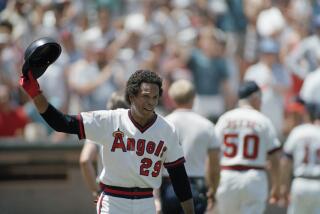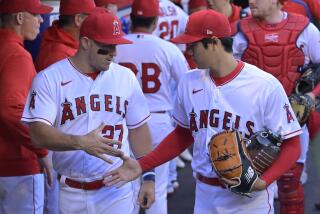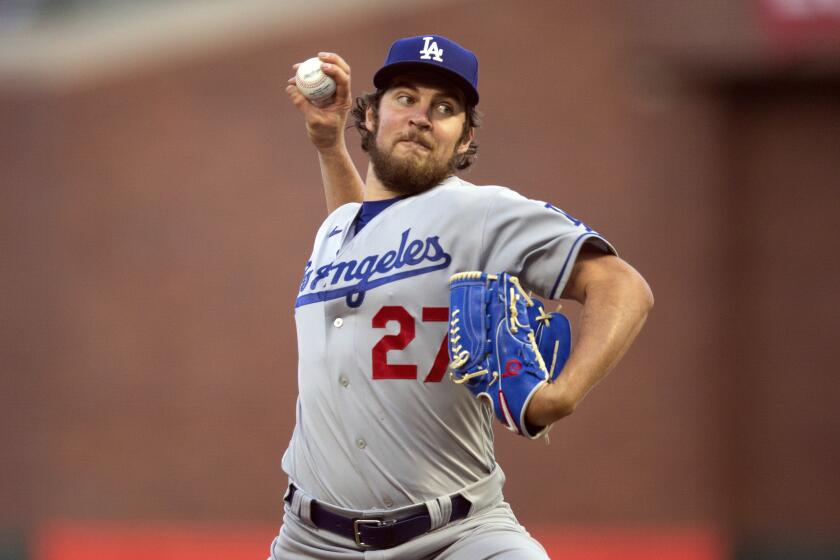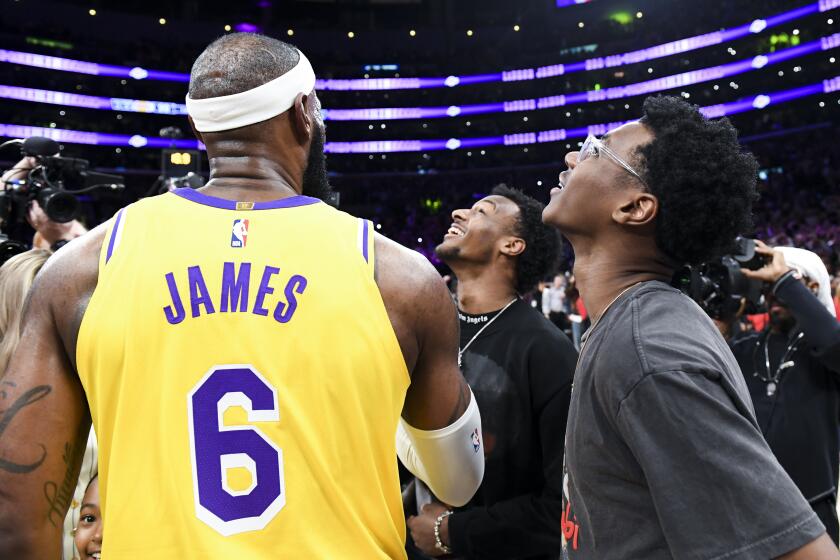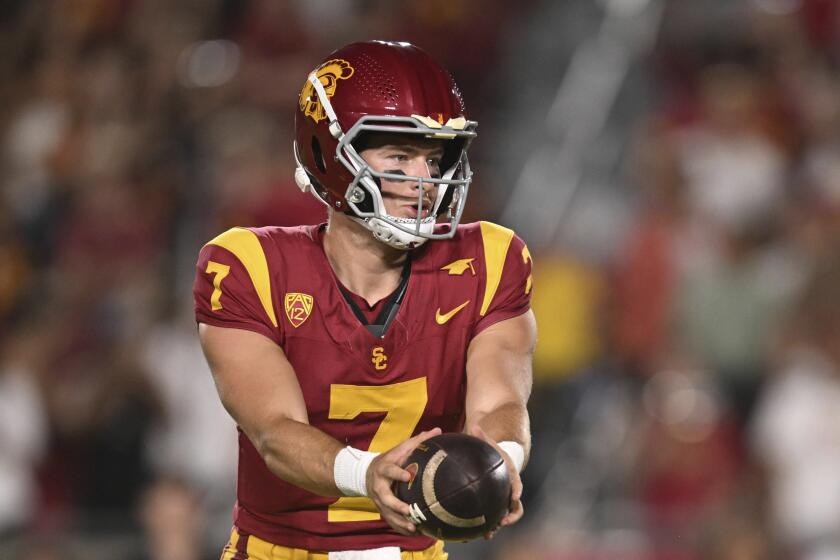What we know about the Angels’ deal with Anaheim
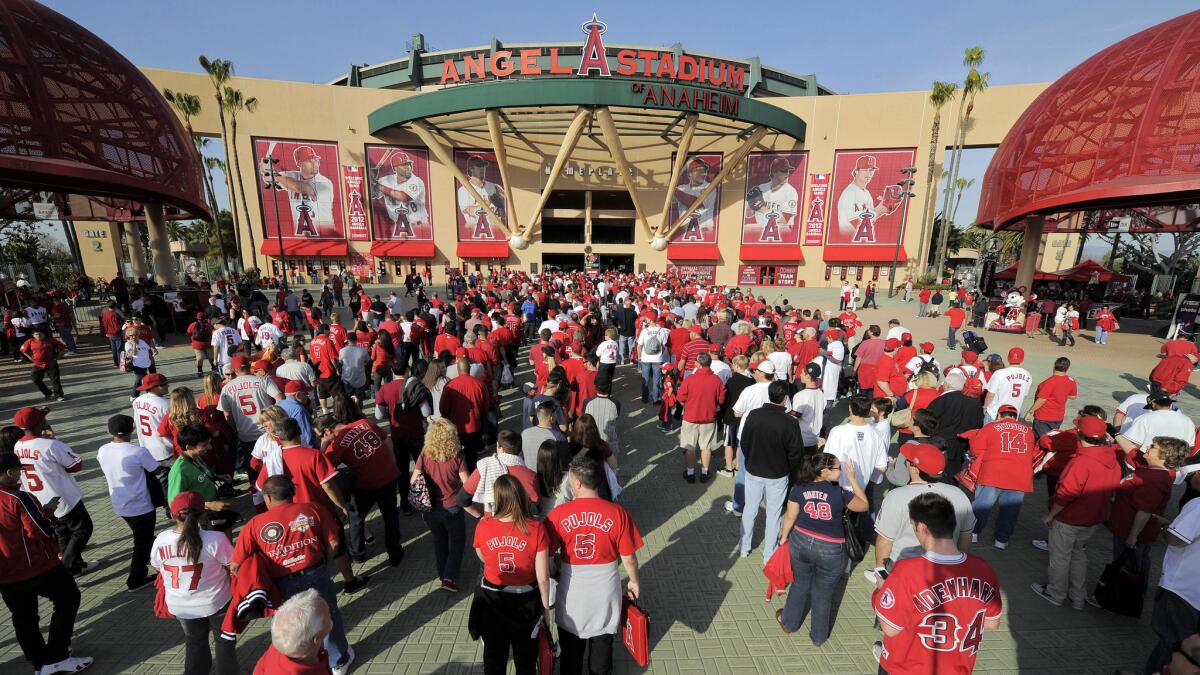
In the department of sports, the city of Anaheim is on a pretty good run. In a 13-month span, the city’s two pro teams have agreed to extend their residency through the first half of this century.
The Ducks last November agreed to call Honda Center home through 2048. And, on Wednesday, the Angels agreed to stay in town through 2050. For a city with a smaller population than Bakersfield, that’s a major league double play.
The headline was clear on Wednesday: The city would sell Angel Stadium and the surrounding parking lots for $325 million.
So when do the Angels open their brand new, grand new stadium?
That depends on whether they decide to build one. The team said it has retained HKS Architects, a firm that designed the Dallas Cowboys’ stadium and Salt River Fields in Arizona, widely regarded as the finest spring training facility in the major leagues, to offer options for renovating Angel Stadium and for replacing it.
The Angels-Anaheim deal keeps the team in town through 2050. A company affiliated with Angels owner Arte Moreno will buy the stadium and surrounding parking lots for $325 million.
And what happens to the surrounding parking lots?
After a half-century of suburban baseball — drive into the parking lot, get out of your car and walk straight into the stadium — the Angels hope to lure fans to arrive early, stay late, spend the weekend, and maybe even move into a ballpark neighborhood. Think restaurants, shops, hotels, and homes: a smaller version of the Petco Park environment in San Diego, integrated into an already growing urban residential district. And, depending on the scale of development, maybe think parking structures too.
The land sale includes the City National Grove of Anaheim, a city-owned theater on the property. The Grove management agreement between the city and Nederlander Concerts expires on Dec. 31, 2020. The city expects the Angels to unveil their development proposal next spring.
Is Arte Moreno himself paying for this?
No, the Angels owner is not the sole party on the hook. Moreno is one of the partners of SRB Management, a company formed last month and registered in Delaware. The Angels would not identify the other partners. SRB, not the Angels or Moreno himself, is buying the stadium and surrounding land from the city.
In theory, that means that Moreno could do what old friend Frank McCourt did with the Dodgers: sell the team, and keep the parking lots. It is unclear what restrictions the city might impose; the city has released a summary of the deal but has not yet released the complete agreement.
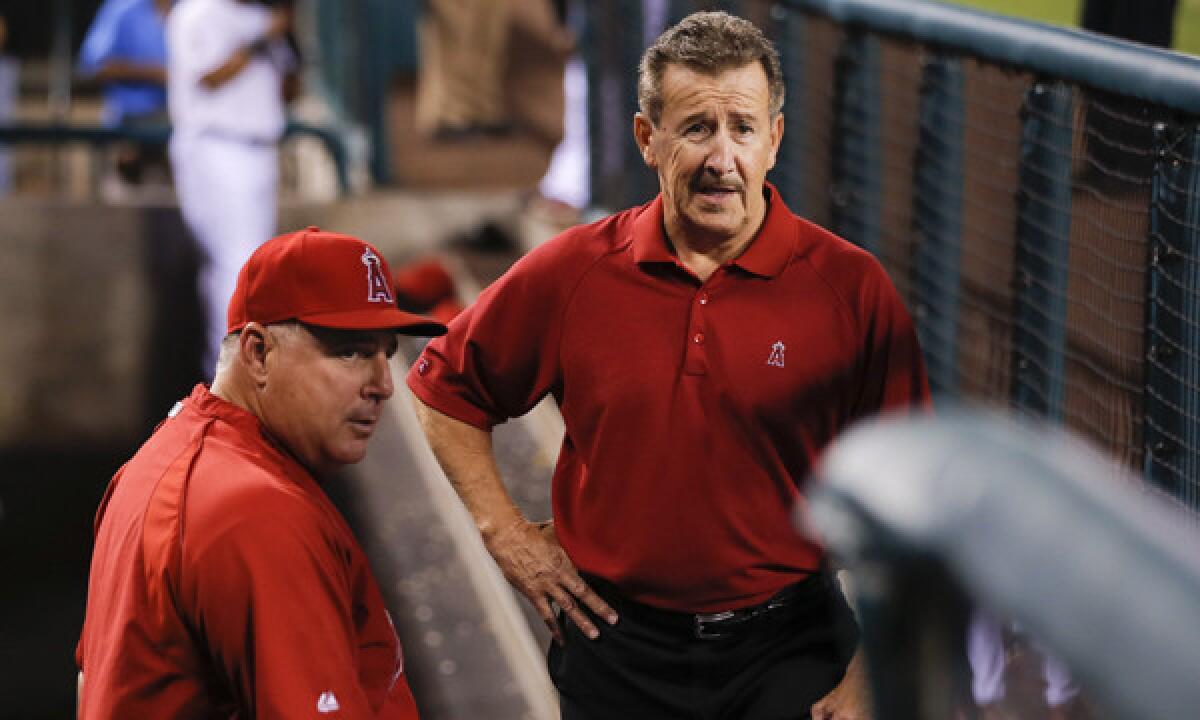
Did the city get market value for the land, as the mayor had insisted it would?
Yes and no. In 2014, the land was valued at $325 million, assuming the Angels would be gone and the stadium would be demolished. Property values have risen since then, so a $325-million deal five years later would not suggest the city got top dollar. In fact, a draft appraisal in June valued the land at up to $500 million.
However, the city prioritized keeping the Angels over offering the property to all bidders. In January, the city reinstated the Angels’ lease, meaning the team had control over whether the city could even offer the entire property for sale until at least 2029. Parking restrictions on the site, and the probability of competing development around the Honda Center, also influenced the lower price.
Still, isn’t $325 million a lot of money for the city?
Sure is. Anaheim could cover its police, fire, parks and library services for one year, with a few million to spare, based on this year’s budget. But the city might not get that money for years. The city has not yet released the complete agreement, but the city’s deal summary said the deal would close “potentially around 2025.”
So is it fair to say the city is guaranteed $325 million at some point?
No. The deal summary also said SRB could pay less depending on whatever agreements might be reached to include parks, affordable housing, and preferences for local hiring. In addition, while the city would not contribute to the renovation or replacement of the stadium, SRB could ask for infrastructure contributions and tax rebates to support the surrounding project, much as any large developer might. Moreno has long classified his preferred deal as a public-private partnership.
The Dodgers and the Angels have both met with star free-agent pitcher Gerrit Cole as they explore options to improve their roster coming off another disappointing finish.
What else figures into the financial deal for the city?
The city would be out of the stadium business, so the skirmishes of whether the team or the city should pay for maintenance, repairs and upgrades would end. The Angels would pay all those bills, and would no longer share ticket or parking revenue with the city. The city also would generate revenue from property and sales taxes. The city estimated it could take in $7 million per year in tax revenue from development, but not soon: the city also estimated development could take place from 2025 through 2050. In any case, a development agreement — with binding commitments — is not expected until next year.
Still, the Angel Stadium deal follows the local model of Dodger Stadium, Staples Center, StubHub Center, Banc of California Stadium, the new Sofi Stadium and the planned Clippers arena: the team, not the taxpayers, pays for the construction of a new sports venue. In Anaheim, where for decades the city has failed to develop and profit from the stadium parking lot, a private developer now gets that chance.
Could the city have driven a harder bargain by trying to find another team to replace the Angels?
The Angels would have had the right to veto another major league team moving into the stadium, so long as they continued to play in Southern California. The Dodgers would have had veto rights too. The NFL already said no to Anaheim, and why would the Chargers pay to fix up a stadium in Anaheim when they wouldn’t do that for their loyal fans in San Diego? Major League Soccer already has awarded California expansion teams in Los Angeles and Sacramento. Anaheim almost certainly would have had to spend millions to demolish the stadium.
Did the city ask Moreno to change the team’s name back to the Anaheim Angels?
No. The Angels had made clear that was a nonstarter, and a majority of the city council preferred to focus on striking a new deal with the team than fighting over the team name.
The Angels acquired starting pitcher Dylan Bundy from the Baltimore Orioles in exchange for four players from their minor league system.
The last and most important question: Can the Angels still afford to sign Gerrit Cole?
Yes, but the cost probably would not be much less than — to pick a not-so-random number — $325 million. Maybe the Angels could throw in naming rights for a new ballpark and replace Angel Stadium with Cole Field.
More to Read
Get our high school sports newsletter
Prep Rally is devoted to the SoCal high school sports experience, bringing you scores, stories and a behind-the-scenes look at what makes prep sports so popular.
You may occasionally receive promotional content from the Los Angeles Times.




